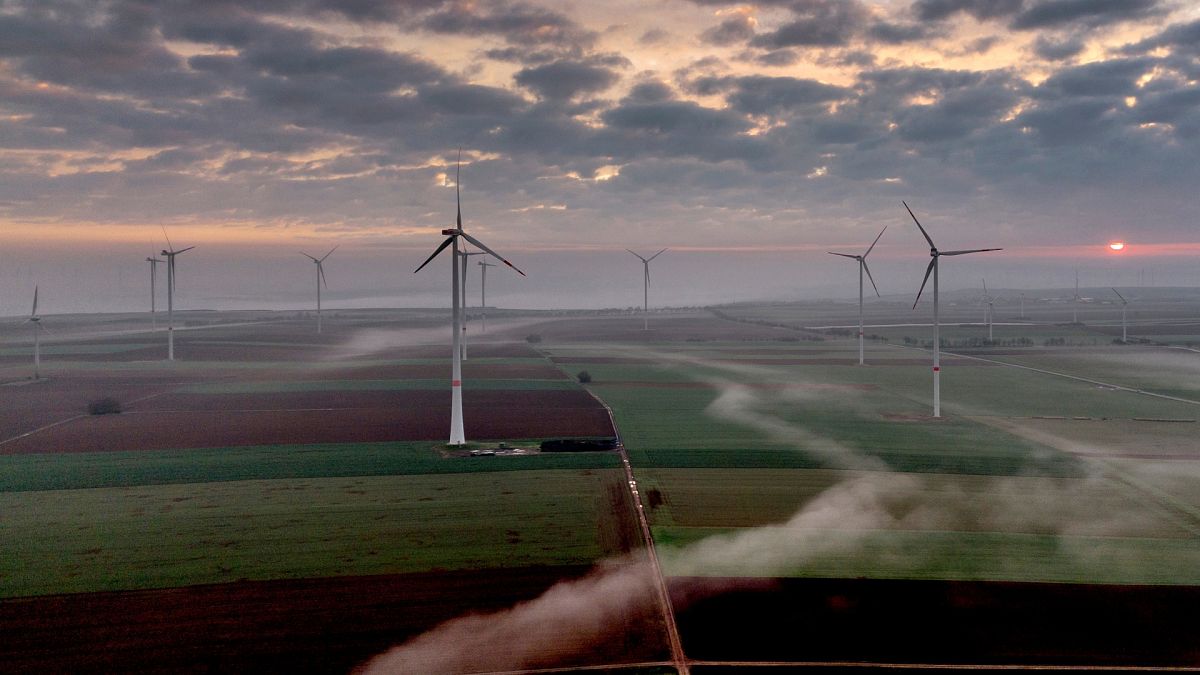World passes 30% renewables milestone for the first time

A decline in fossil fuel power is now ‘inevitable’, the report’s authors say.
More than 30 per cent of the world’s energy is now generated using renewables and the European Union is well ahead of this global average, a new report has found.
Energy think tank Ember found that major growth in wind and solar helped push global electricity production past this milestone in 2023.
The report covers 80 countries which represent 92 per cent of the world’s energy demand and historic data from 215 other countries. Its authors say that this rapid growth has brought the world to a crucial turning point where fossil fuel generation starts to decline.
Clean power sources have already helped to slow the growth in fossil fuels by almost two-thirds in the last 10 years.
“The renewables future has arrived,” says Dave Jones, Ember’s director of global insights. “Solar in particular is accelerating faster than anyone thought possible.”
Solar was the world’s main supplier of electricity last year, providing twice as much new energy than coal. It maintained its status as the fastest-growing source of energy for the 19th year in a row.
How is the EU ahead of the global average?
The EU is well ahead of the global average generating 44 per cent of its energy from renewables. Expansion of solar and wind is happening much faster than the rest of the world with the bloc contributing 17 per cent of global growth in 2023.
Greece had the world’s second-highest share of solar power in its energy mix at 19 per cent, according to the report, followed by Hungary (18 per cent) and the Netherlands (17 per cent). Chile was in first place, with almost 20 per cent.
Sarah Brown, Ember’s European programme director, says the EU is ahead due to “early adoption and early action”. The European Green Deal has been instrumental in setting targets, creating policies and securing investments, she adds.
“You’ve got obviously that early adoption, people are aiming for decarbonising the power sector and the best way to do that is through wind and solar,” Brown explains.
“You also have the invasion of Ukraine which increased the sense of urgency around transitioning to clean power and getting off relying on fossil fuels – not just coal but also gas, and particularly from Russia. That was a big boost for accelerating the transition across the EU.”
Then in 2022, REPowerEU saw packages to boost implementation of wind and solar. Plans were put in place to help individual member states reach renewable energy targets and deploy technologies at a national scale.
There was a fall in energy demand due to the energy crisis, cost of living crisis and mild weather over the last few years. There was also a lot of talk about coal filling the gap when that demand rose again with increasing electrification.
But Brown says that towards the end of last year and the beginning of this year, demand has plateaued and stabilised.
“Certainly you can’t ignore that there was some demand [based] impact on the decrease in use of fossil fuels, but also there was a significant role of wind and solar replacing it.”
Overall, she says, the EU is “very much on the way” to its goal of having renewable sources account for 72 per cent of power generation by 2030.
Is the world past a peak in fossil fuel power?
Globally, the Ember report says, renewable energy growth could have been even higher in 2023 if it weren’t for a five-year low in generation from hydropower. This was due to drought in China and other parts of the world.
Normally this would have meant that the clean energy capacity added around the world last year would have caused fossil fuel generation to drop by 1.1 per cent. Instead, it was met with an increase in coal power, causing a 1 per cent increase in global power sector emissions.
Four countries severely affected by drought – China, India, Vietnam and Mexico – accounted for 95 per cent of the rise in coal generation.
Despite this, the report’s authors say that expected clean energy growth gives them confidence that a new era of declining power sector emissions is about to begin. They predict a 2 per cent drop in fossil fuel generation this year with half the world’s economies now at least five years past a peak in fossil power.
“The decline of power sector emissions is now inevitable,” Jones says.
“2023 was likely the pivot point – peak emissions in the power sector – a major turning point in the history of energy. But the pace of emissions falls depends on how fast the renewables revolution continues.”
Key enablers like the EU with high-level policy ambition, incentive mechanisms and flexibility solutions need to continue to “unleash the full potential of solar and wind”, he adds, for this momentum to continue.
Related
Europe’s far right groups launch unofficial campaign for the European…
MADRID – Europe’s far-right political parties unofficially launched their campaign Sunday for European Union elections in Spain with strong messages against
Legitimising Libya’s Haftar risks enabling European migration crisis
Western diplomats who engage with Libyan hardman Khalifa Haftar are hindering Europe's capacity to curb Russia's growing influence in the North African country,
Russia seizes assets of three European banks
MOSCOW: A Russian court has ruled that Deutsche Bank and UniCredit’s assets in the country are to be seized, documents showed. European banks have largely exi
Brexit victory as even Europe politician admits Britain is ‘no…
Brexit has allowed the UK to take a leading role in supporting Ukraine in its war with Russia, according to Poland's Foreign Minister.Radosław Sikorski is part









.jpg)


